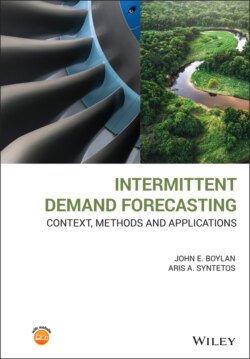Читать книгу Intermittent Demand Forecasting - John E. Boylan - Страница 63
3.2.1 Rules of Thumb for the Order‐Up‐To Level
ОглавлениеSuppose that the review interval is one week and the lead time is two weeks, giving a total protection interval of three weeks. Suppose, further, that our forecasted mean demand is two units per week, and the demand is non‐trended and non‐seasonal. It may be tempting to set the OUT level as the forecasted mean demand over the protection interval, namely six units. This would be correct if it were certain that demand would be for the exact mean demand predicted, but this is rarely the case. More commonly, the demand will be fluctuating. Not taking account of these fluctuations can lead to frequent stockouts.
An alternative calculation, which attempts to address this issue, is to multiply the forecasted demand per week by a period that is longer than the protection interval, to allow for demand uncertainty. For example, we could multiply the forecasted demand, of two per week, by four weeks, instead of three, to give an OUT level of eight units. The problem now is that the setting of four weeks is arbitrary. Why not use five or six weeks instead of four? There is no guarantee of hitting service level targets using this type of calculation. For highly unpredictable demand, we may set the OUT level too low and, for more predictable demand, we may set it too high. Therefore, although this rule of thumb has the merit of simplicity, it risks service level targets being missed or targets being achieved with excessive stocks.
